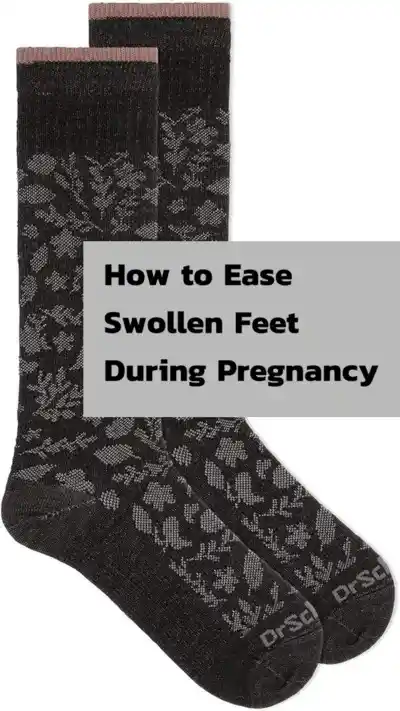Swelling in the lower legs and feet is a common occurrence for pregnant women. This happens as a result of the extra weight and hormone fluctuations that come with being pregnant. It might come as a surprise, but pregnancy can also lead to changes in the feet, like a decrease in arch and an increase in foot length. While further research is required to find ways to prevent these changes, there are various methods to minimize swelling and enhance comfort during pregnancy.
Wear Compression Socks
Wearing compression socks during pregnancy is a helpful method to relieve discomfort and decrease inflammation in the feet. These socks exert a mild force on the legs, which enhances blood flow and stops the accumulation of fluids. To obtain the best results, choose knee-length compression socks with a pressure of 15-20mmHG.
Elevate Your Feet
To ensure good blood circulation and minimize swelling, it is crucial to raise your feet when sitting or taking a break. Crossing your legs should be avoided as it can disrupt blood flow. Instead, place your feet on a stool or use a pillow to elevate them higher than your heart. This posture facilitates the flow of fluids away from your feet and provides relief from swelling.
Incorporate Regular Stretching
Stretching your legs and feet at regular intervals throughout the day can help alleviate swelling and improve circulation. Simple exercises, such as ankle rotations, toe curls, and flexing and extending your feet, can be done while sitting or standing. These exercises promote blood flow in the lower extremities, reducing discomfort and swelling.
Avoid Prolonged Sitting or Standing
Sitting or standing in one position for extended periods can contribute to swelling in the feet and ankles. If your job requires sitting for long hours, take frequent breaks to stretch and walk around. When standing for a prolonged period, try shifting your weight from one foot to the other or use a footrest to reduce strain. Moving and changing positions frequently can help prevent fluid buildup and alleviate swelling.
Stay Hydrated
Drinking an adequate amount of water throughout the day helps flush out excess fluids from the body, which can contribute to reducing swelling. Aim to drink at least eight glasses of water daily. Staying well-hydrated can also prevent dehydration, which can worsen swelling.
Conclusion
Many pregnant women experience swelling in their feet and legs, which can be uncomfortable. However, there are measures you can take to relieve the discomfort and reduce the swelling. Try wearing compression socks, elevating your feet, doing regular stretches, avoiding sitting or standing for long periods, and staying hydrated. These actions can improve blood circulation, reduce fluid retention, and ease swelling. It is important to remember to consult with your healthcare provider for personalized advice and to keep an eye on any symptoms that may cause concern.
About the Author
Reyus Mammadli is the author of this health blog since 2008. With a background in medical and biotechnical devices, he has over 15 years of experience working with medical literature and expert guidelines from WHO, CDC, Mayo Clinic, and others. His goal is to present clear, accurate health information for everyday readers — not as a substitute for medical advice.







